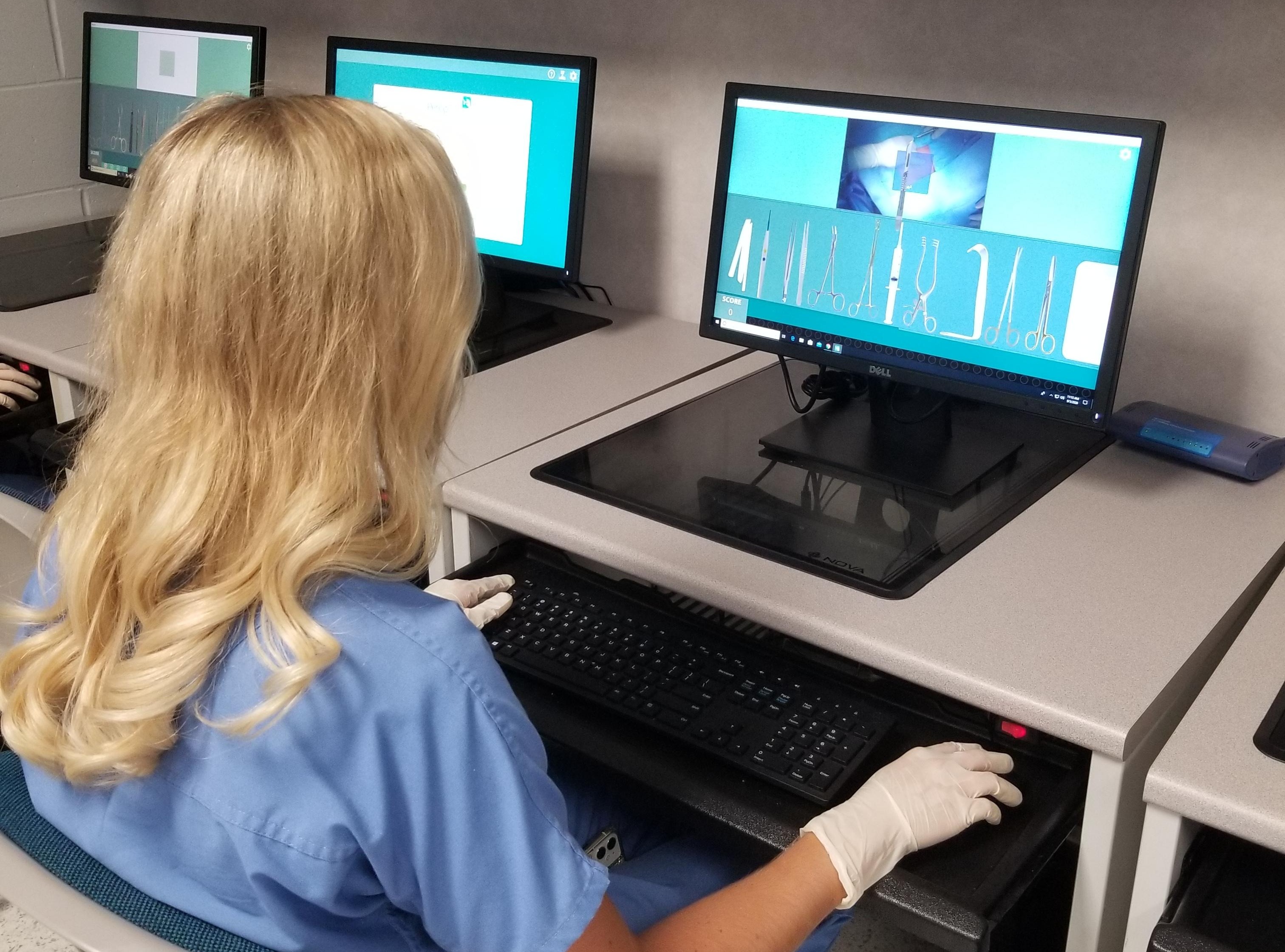
During our PeriopSim Integration Curriculum Webinar, we asked Brooke Oliver, Surgical Technology Director at Richland Community College how to assign credits to make PeriopSim mandatory. For all other educators looking for ideas on how to do the same, we put her answers together in this blog post.
Brooke initially purchased the PeriopSim for her cohort in June of 2020 to enhance her students’ laboratory and clinical experiences virtually due to COVID restrictions. Throughout the webinar, Brooke and the other educators emphasized making PeriopSim mandatory for credits to motivate students to use PeriopSim.
She implemented PeriopSim into her Procedures courses and assigns modules based on the specialty that is being covered at the time. Brooke uses a scoring system based on the grades they receive in each module. Each student must complete the module by the given due date and are graded under the following criteria:
Each student must complete the assigned module a minimum of 3 times to receive a grade. Each module assigned is graded with a maximum of 15 points per module. You will receive a letter grade "A", "B", "C", "D" or Incomplete, based on the following criteria:
A - Proficient (will earn all 15 points)
Accuracy: No incorrect instruments passed over last 3 experiences.
Timing: On time delivery along with a positive anticipation time or reaction time.
B - Competent (will receive 10 points)
Accuracy: No incorrect instruments passed over the last 3 experiences.
Timing: Generally delivering instruments within the allowed time.
C – Slow (5 points)
Accuracy: At least one experience has zero incorrect instruments, and no experience has more than 1 incorrect instrument pass so an average of less than 1 incorrect instrument over the last 3 experiences (Accurate).
Timing: Delivering instruments outside of the allowed time.
D – Inaccurate (no points)
Accuracy: has passed more than 1 incorrect instrument in a single experience or has an average of 1 incorrect instrument pass over the last 3 experiences
Timing: Delivering instruments outside of the allowed time.
Incomplete (no points)
Has completed less than 3 experiences.
The student will receive 15 points for an A, 10 points for a B, 5 points for a “C” and 0 points for anything lower than a C. They are allowed to complete the module as many times as they want prior to the due date, noting that the more times a student completes the assigned module, the better their score will be.
Brooke also loves to use the leaderboard function within PeriopSim to motivate her students. She hosts 'PeriopSim-Offs' where the students will spend time on PeriopSim and whoever has the highest score at the end gets extra credit. Brooke also uses PeriopSim to supplement clinical learning and told a recent success story with one of her students:
"I just assigned a student on Friday an inguinal hernia that she was going to do on Monday at Clinical. She had three back-to-back inguinal hernia assignments. I told her on Friday, 'I want you to go in, competency on the PeriopSim instrument tray first and then do the procedure at least seven times. I'm able to track that because we can see when you log in. That's really going to help you be prepared for anticipatory skills at clinical on Monday.'
The surgeon on Monday asked her how many of these had she done and she said that was her first inguinal hernia. He was just wowed because she was on top of it. She was passing and anticipating. She came up to me after and said 'You know, Professor Oliver, it’s because I practiced PeriopSim so much this weekend that I knew what was going to happen next.'
I think that this shows that even though they're doing it virtually or in a 2D (PeriopSim) environment, they can still take that learning experience and transfer it into the clinical environment and it really enhances their learning education experience."
Although Brooke integrated PeriopSim during the pandemic, she finds it beneficial even during in-person learning and will continue to use it in the future.
"The students are coming into clinical so much more prepared than they were by just doing the simulations in the lab. I don’t have VR (PeriopSimVR) yet, and I’m still seeing much better clinical skills at a higher level. They have more confidence coming into clinical."
Brooke shared that there are always students who are more hesitant in lab and would wait for their peers to do it first. She found that with PeriopSim, these students are able to do it from their own home. Now they're becoming more comfortable and confident in lab because they are able to make mistakes without anyone judging them and now they go into labs and Brooke said that they are progressing into clinicals more confident than they have ever been. In the future, Brooke hopes to purchase PeriopSimVR to further supplement her students' learning.
"Just from hearing stories from other educators who’ve had PeriopSimVR have said that you just get submerged in the environment and it really mimics the OR environment. I think that's going to be an excellent addition for our students. Even though we have a fully functioning operating room and we have different setups going on, it still isn’t like the OR. I’m really looking forward to doing that in the future but I will continue to use 2D (PeriopSim) as well."
**These are guidelines based on other surgical technology recommendations which would differ from hospital educator guidelines. To watch the whole webinar, click here
